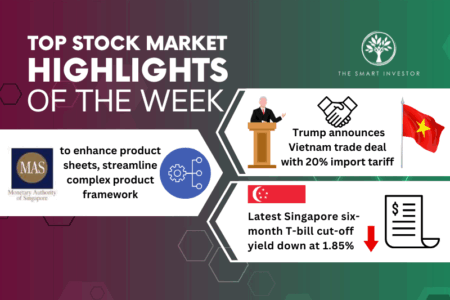Are stocks too expensive? On the surface, it certainly seems so.
The US economy declined by 32.9% on an annualised basis in the second quarter of 2020. Sequentially, it fell 9.5% from the first quarter, marking the fastest quarterly contraction on record. Worse still, many parts of the world are still in full or partial lockdowns and the travel industry is still effectively in a standstill.
And yet, the S&P 500 – the major US stock market benchmark – is roughly flat year-to-date. There is clearly a mismatch between the US stock index and the economy.
But if you think that the index is going to fall because of this mismatch, what are those invested missing? Are they all experiencing FOMO (fear of missing out) or are they all just plain dumb? I don’t have the answers, but I want to present some information as food for thought.
The key reasons
Based on my observation, there are two main reasons that market watchers point to for causing an expensive stock market. They are (1) Robinhood traders rushing to buy stocks and (2) the extra liquidity created by the Federal Reserve causing a rise in asset prices. Robinhood is a mobile app that provides commission-free trading for financial instruments such as stocks, exchange-traded funds, and more.
But Robinhood traders only make up a fraction of all market participants. There are market shorters, big hedge funds, and other professional investors that are participating in the market too. If stocks are too expensive because of exuberant demand from Robinhood traders, it is likely that there will be investors who will be shorting the market and keeping prices in check.
Second, the extra liquidity injected by the Federal Reserve is here to stay and is, therefore, rightly, an important determinant of stock prices.
Discerning
The fact of the matter is that everyone is seeing the same thing. Most of us are not special investors with special insights.
Yes, the stock market has reached bubble levels in the past but bubbles are rare. Most of the time, the stock market is fairly efficient. Could it be the case now?
If we take a closer look at the S&P 500, we can see a division in price performance between companies that are fundamentally sound and those that are not. For instance, technology stocks have made up the bulk of the market’s gains this year, while companies in sectors that have been hit the hardest have taken the brunt of the fall.
Year-to-date (as of 1 August 2020), the top-performing sector in the S&P 500 is Information Technology, which is up 21%. That’s backed by strong fundamentals. Many technology companies have seen a surge in revenue and profits in the most recent quarter. Amazon, Apple, Facebook and Netflix, for example, reported a year-on-year increase in revenue of 40%, 11%, 11%, and 25% respectively, for the second quarter of 2020.
At the other end of the spectrum, we have energy and financial stocks that are down 40% and 21% respectively as they are likely the hardest-hit from the current COVID-19-driven economic contraction. Airline stocks are also far below their pre-COVID-19 levels. Local flag carrier Singapore Airlines’ share price is down 62%, while the major US airlines are down between 40 and 70%.
All of which seems to indicate that market participants have been discerning about which stocks to sell down and which to price up.
The stock market and the economy
It can be easy to assume that the stock market and the economy are the same things. But there are actually big differences.
The S&P 500, a commonly used barometer to gauge the stock market in the US, only comprises around 500 companies. Within the index, the top five companies – Alphabet, Amazon, Apple, Facebook, and Microsoft – have a combined weight of around 22%.
A rise in the price of the top five companies can disproportionately impact the index. This is exactly what is happening. The big five, along with Netflix, have seen their share prices increase substantially this year. If we exclude the performances of just these six companies, the S&P 500 would be down substantially for the year so far.
Furthermore, being an index of just 500 companies, the S&P 500 does not take into account the rest of the 30 million-plus businesses in the US, many of which are SMBs (small, medium businesses). In fact, SMBs generate around 44% of the US’s economy activity, according to a recent study from The Office of Advocacy of the U.S. Small Business Administration. And unfortunately, SMBs are the most impacted businesses in the US during the COVID-19 pandemic.
Who knows?
Nobody knows how this will all play out. The ending’s not written yet. It is only with hindsight that we can tell if the stock market is currently making sense, or if it’s not.
But this is why investing is hard, and why beating the market is even harder.
Want to know what stocks we like for our portfolio? See for yourself now. Simply CLICK HERE to scoop up a FREE copy of our special report. As a bonus, we also highlight 6 blue chips stocks trading at a 10-year low. But you will want to hurry – this free report is available for a brief time only.
Click here to like and follow us on Facebook and here for our Telegram group.
Note: An earlier version of this article was published at The Good Investors, a personal blog run by our friends.
Disclosure: Jeremy Chia does not own shares in any of the companies mentioned.




